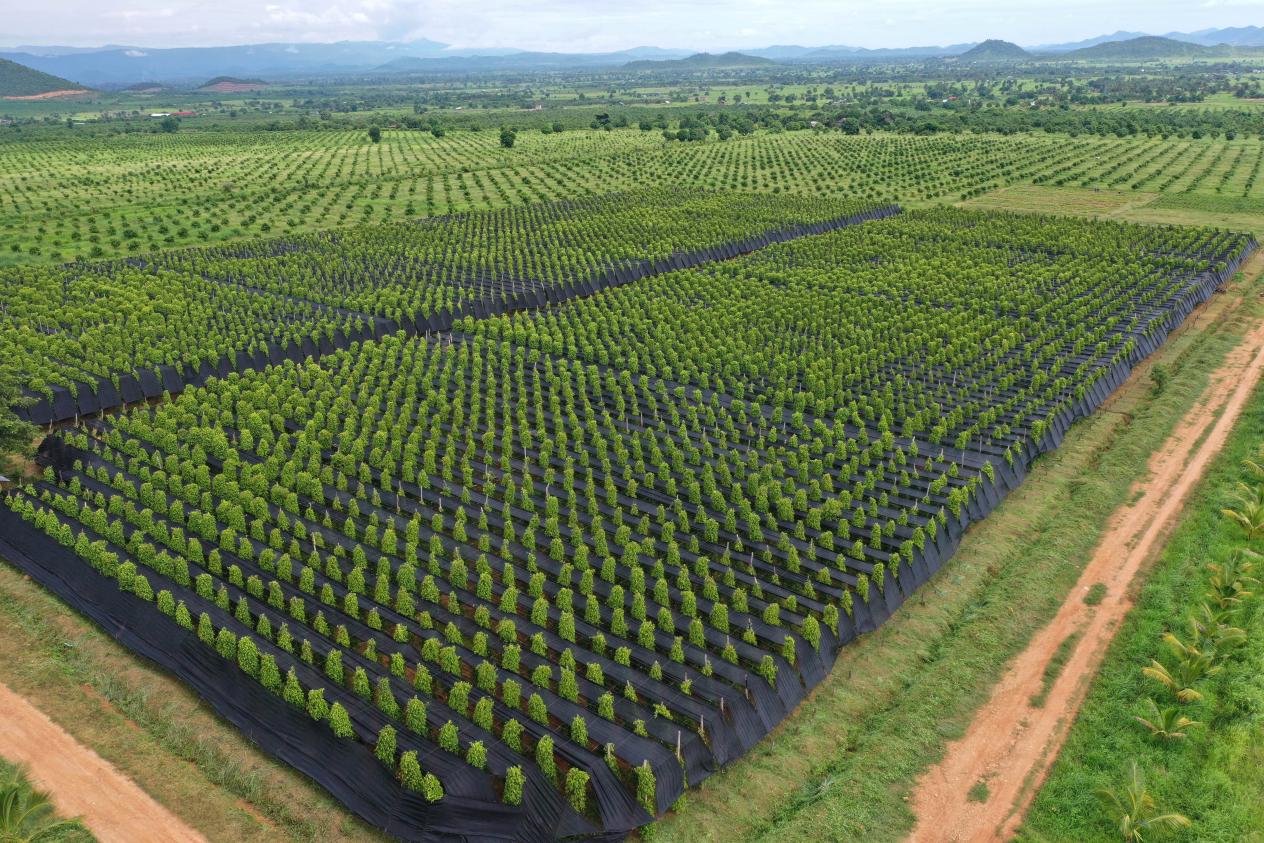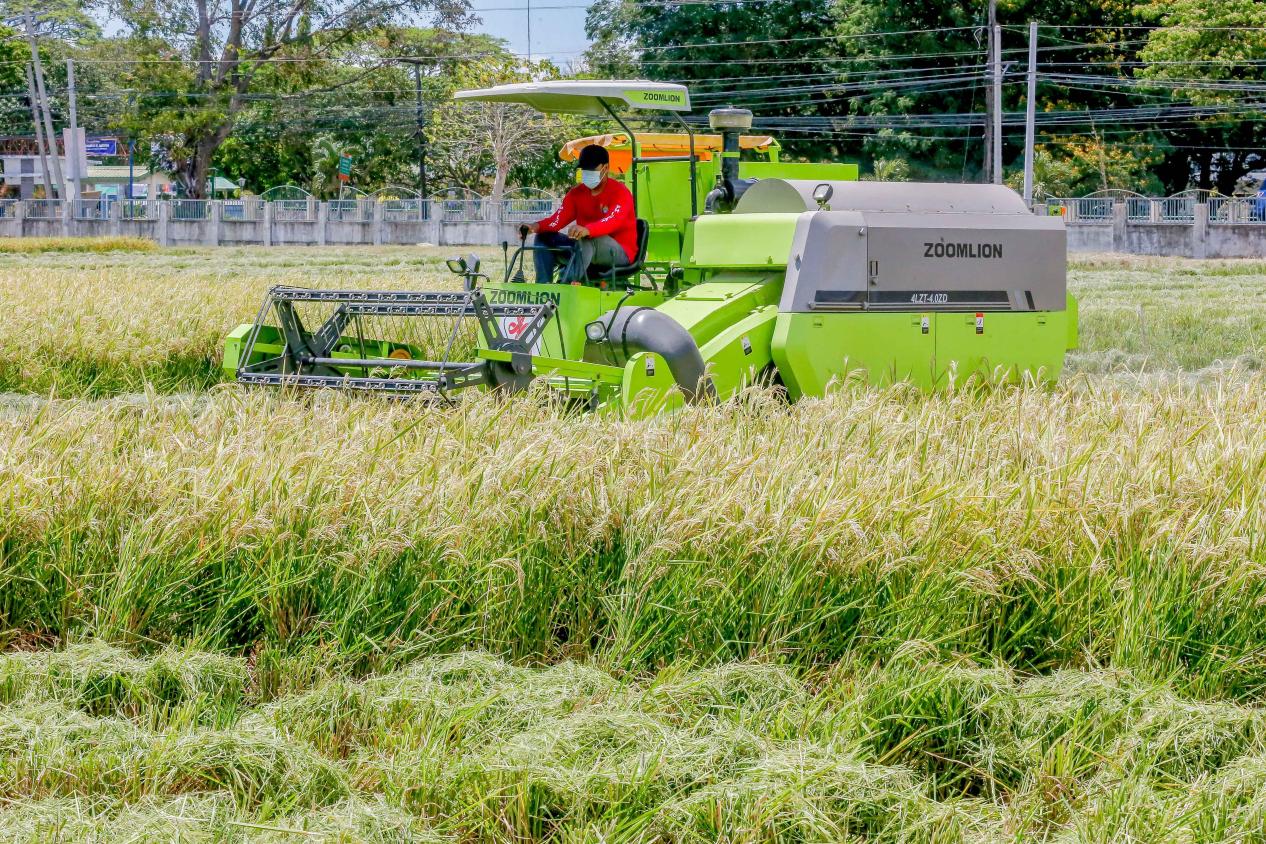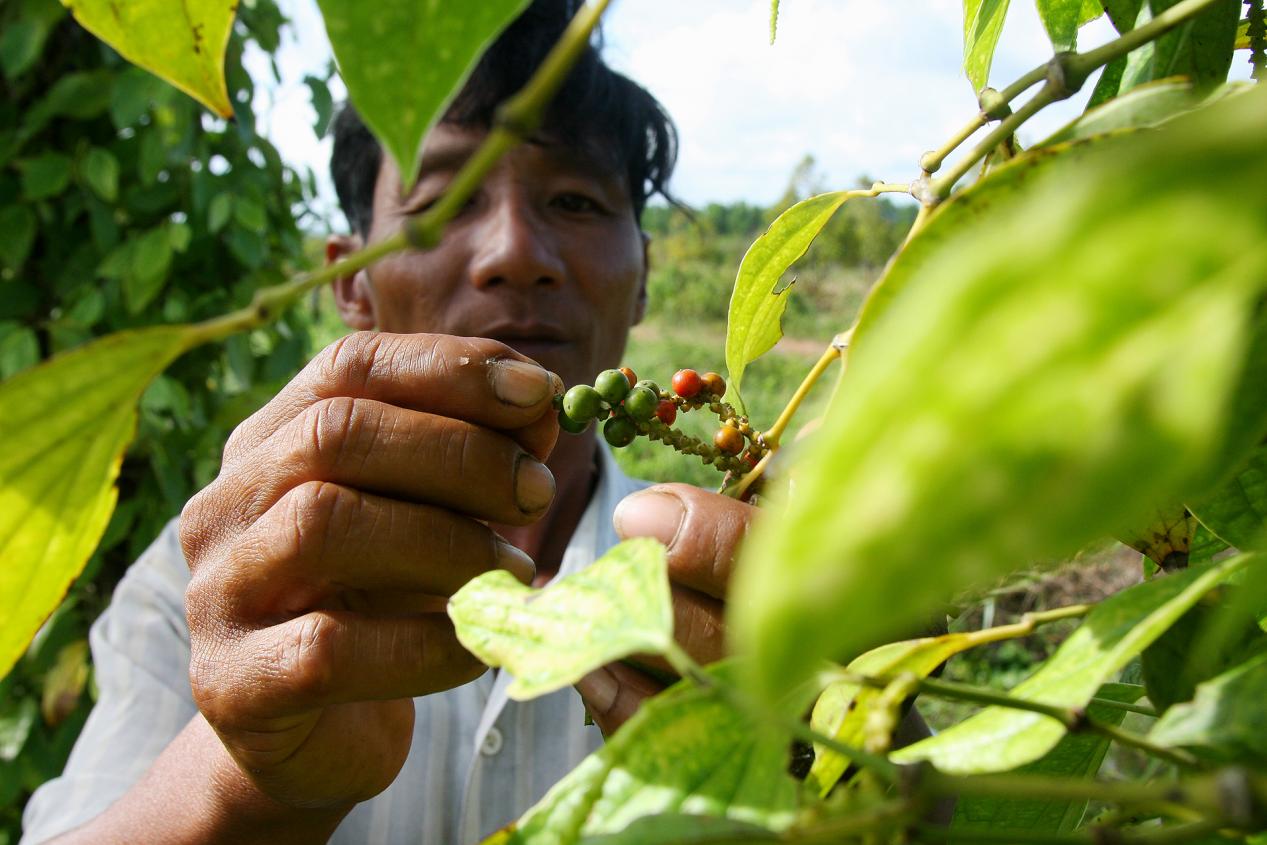

Written by Tang Qi / Translated by Xie Zongming
At the rice farm painted gold, grains in the crops plumply grow. Machinery roars around the fertile field, where the farmers see good yield — people long for the next harvest scenery when the grains go into the granary. Wandering across the farmlands in ASEAN, the excellent harvest every year puts a smile on ASEAN people’s faces.
With water conservancy projects, agricultural technology, and scientific and technical personnels, China let the wind of good harvest blow across the rice fields of ASEAN, spreading the seeds of happiness in the hearts of ASEAN people.
Heart-warming water conservancy projects
Prosperous agriculture is based on a solid foundation. In recent years, as China-ASEAN agricultural cooperation keeps deepening, ASEAN’s agricultural infrastructure has seen magnificent development, bringing a better life to the people. These projects nourish the vast field of ASEAN, stimulating vigorous agricultural production.
Is it possible to have the yield higher in the dry season than in the rainy season? The answer is “yes” in Nongthat Village, Khammouane Province, Laos. Choukham, a villager in Nongthat, said with a smile, “In the rainy season before, the rain comes randomly. It’s terrible for the rice crops. Thanks to the water conservancy project China built for us, the water resource is stable now, and the yield has increased. The yield is four tons per hectare in the rainy season, whereas, in the dry season, the number goes to five.”
Choukham mentioned t he water conservancy project of t he No.3 Tailwater Gate of the Nam Theun No.2 Hydropower Station. The system includes main, trunk and branch canal systems and drains, stretching for about 101 kilometers and covering an irrigation area of over 2,800 hectares. Since its completion in 2015, it has greatly improved the living conditions for the locals, increased the crop yields, and eased the effects of flooding.
Laos is one of many countries with improved water conservancy from Chinese companies. In the Baribour District of Kampong Chhnang Province, Cambodia, villagers suffered from the drought during the dry season. However, after the China-aided water supply project was put into operation, the situation no longer existed. Meng Suon, a 49-year-old villager, said, “In the dry season, we used to fetch water from a pond two or three kilometers away, or we had to buy water from water merchants. Now, we can access clean water just outside our doorsteps. We no longer have to worry about water shortage.”
The “ Northern Granary ” of the Philippines also sees a similar change. In the farming area that mainly grows rice and corn, the Chico River Irrigation Project, built by a Chinese company, waters the vast fertile land. The irrigation canals stretch across the field like capillaries, nourishing 8,700 hectares of farmland around them. The project dramatically increases the output of the dry season crops, benefitting 22 villages and 5,000 farming families nearby.

Projects like these nourish not only the field but also the life of the locals. In recent years, the rice field has kept expanding in Nongthat Village, Laos, and the locals can earn extra money from vegetable fields, fruit trees, and fish ponds. Villager Panom said, “We don’t have to worry about our children’s tuition fees. We don’t need to go to Thailand for work now. I’m planning to bring my son with me after graduation to expand the farmland and develop feature agricultural products. We will strive for
good life working together as a family.”
No matter it is Laos, Cambodia, or the Philippines, these practical projects jointly draw a prosperous picture of China-ASEAN agricultural cooperation. With more agricultural infrastructure being built in ASEAN, more smiles will be seen in the rice fields.
A good harvest is in sight while the granary is already full
Food security is an essential part of well-being. In the course where China joins hands with ASEAN to promote agricultural prosperity, high-quality varieties of hybrid crops are the main results. In a world where food is of crucial concern, ASEAN people are
developing from “eating enough” to “eating well”.
Mr. Yuan Longping, known as the “Father of Hybrid Rice”, had two dreams in his life: the first was to grow rice high enough to make shade for people; the second was to let hybrid rice grow across the world. Today, the latter is coming true. In ASEAN countries, Chinese hybrid rice is vastly planted. These “magic crops” from China bring the hope of eliminating famine for the ASEAN people.
The Philippines is the first place to introduce Chinese hybrid rice technology. In the past, the rice yield in the Philippines had struggled at a low level. Thus, since 1998, Yuan Longping had visited the country over 30 times and jointly worked with the Filipino people to cultivate a hybrid rice variety suitable for the local soil. Hybrid rice has since been rooted in the fields of the Philippines.
Hybrid rice has brought hope to Filipino people. Years ago, during a harvest season in the Philippines, Yuan saw a Filipino farmer holding a bundle of freshly-harvested and tied-up hybrid rice. The agronomist happily asked the farmer if the crops heavy and if he felt happy about the harvest. Getting positive answers to both questions, Yuan truly felt fulfilled. It is a story Yuan used to speak of to people around him.
In 2001, the Philippine-Sino Center for Agricultural Technology was established, allowing further development and promotion of hybrid rice varieties. In Maluid Barangay, where the PhilippineSino Friendship Farm is located, villager Maniago, aged 94, said, “For over ten years, we have been working with the Center. The farmland has grown many kinds of Chinese-developed hybrid rice, and the yield per hectare has increased from 3-4 tons to almost 11 tons. Since the output has grown, I raised the payment for the farm workers.”

Now, the sown area of hybrid rice in the Philippines has reached 1 million hectares, accounting for 1/4 of the total rice-growing area. The maximum output per hectare is 15 tons, three times that of the production of local traditional rice varieties. Hybrid rice products are available in farmer’s markets and supermarkets in the Philippines.
Food in ASEAN increases in not only the amount but also quality. In 2015, the Lao-China Cooperative Crops Fine Varieties Experiment Station was built in Ban Tha Dok Kham Village, Laos, filling the uncultivated lands with the fragrance of fruits. Khaimar, Secretary of the village’s LPRP Branch, said, “At first, the villagers were not familiar with this kind of farming, so we invited a Chinese specialist to introduce the required knowledge, including greenhouse building, farming preparation, irrigation, and sowing. The villagers have gained a lot of experience from it.”
The Experiment Station has brought 48 quality agricultural varieties to the villagers, with 2,833 hectares of demonstrative farmland growing them. After years of development, the Experiment Station is becoming an integrated modern agricultural base with the functions of hybridization experiments, farming demonstration and exhibition, technology promotion, personnel training, and tourist sightseeing.
Today, vegetables are grown all over this small village. Wholesalers in the city keep coming to Ban Tha Dok Kham, a village that has become a vegetablefarming center outside the capital city.
Compatriots lead the way
In agriculture, agronomist is the most critical resource. China and ASEAN have cooperated in agriculture for many years, with ASEAN countries getting groups of agronomists who lead the way in achieving agricultural prosperity with the help of their local compatriots.
In early January 2020, Cho Cho San finished her work in Guangxi and left for Myanmar. Cho Cho San is an assistant research fellow of the Plant Pathology Research Section of the Ministry of Agriculture, Livestock and Irrigation of Myanmar.
In 2019, with Guangxi’s ASEAN Talented Young Scientist Program, Cho Cho San came to work at the Guangxi Academy of Agricultural
Sciences.
After a year of research in China, Cho improved her skills in molecular biotechnolog y and enhanced her theoretical knowledge of plant pathology. “I will share what I’ve learned in China with my Burmese colleagues through training, workshops, and academic reports,” said Cho, hoping to help more Burmese farmers with her research findings.
According to the statistics of China, over 600 people from Myanmar in China applied for governmental scholarships. This number later increased to 700 in 2019. Some applicants chose to study and research in Guangxi. In the past two years, nine young researchers from Myanmar came to the research institutions in Guangxi to work and exchange experiences, whose research fields are mostly agriculture-related, such as microbiology and biotechnology.
There are many more people who benefited from China-ASEAN agricultural cooperation. The 2022 China (Hainan) - Cambodia Training Course on Tropical Agricultural Technology was held on November 14, 2022. The online course had Chinese professionals in tropical agriculture teaching in Hainan, allowing the students to learn at the Royal University of Agriculture (RUA) in Cambodia before going to the local agricultural base to practice the knowledge.
According to Dr. CHEANG Hong, Dean of the Faculty of Agronomy of RUA, the students and teachers benefited a lot from the course, and it is training the professionals for Cambodia to develop modern tropical agriculture. After phases of courses, Cambodian agronomist keeps increasing, improving Cambodia’s agricultural technology and boosting local job opportunities.
With a good harvest in sight, the farmlands of ASEAN are filled with joyful farmers.

桂ICP备14000177号 Copyright@2006-2013 Guangxi China-ASEAN Panorama Magazine Agency Co., Ltd. All Rights Reserved